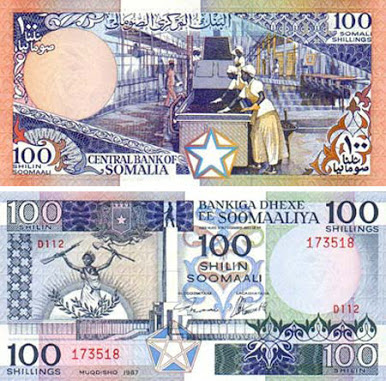Somalia remained virtually self-sufficient in it’s entire history until the 1980s.
The IMF-World Bank intervention in the early 1980s contributed to exacerbating the crisis of Somali agriculture. The economic reforms undermined the fragile exchange relationship between the “nomadic economy” and the “sedentary economy” – i.e. between pastoralists and small farmers characterized by money transactions as well as traditional barter. A very tight austerity program was imposed on the government largely to release the funds required to service Somalia’s debt with the Paris Club. In fact, a large share of the external debt was held by the Washington-based financial institutions.’ According to an ILO mission report:
[T]he Fund alone among Somalia’s major recipients of debt service payments, refuses to reschedule. (…) De facto it is helping to finance an adjustment program, one of whose major goals is to repay the IMF itself.
Towards the Destruction of Food Agriculture
The structural adjustment program reinforced Somalia’s dependency on imported grain. From the early-1980s to the 1990s, food aid increased fifteen-fold, at the rate of 31 percent per annum.’ Combined with increased commercial imports, this influx of cheap surplus wheat and rice sold in the domestic market led to the displacement of local producers, as well as to a major shift in food consumption patterns to the detriment of traditional crops (maize and sorghum). The devaluation of the Somali shilling, imposed by the IMF in June 1981, was followed by periodic devaluations, leading to hikes in the prices of fuel, fertilizer and farm inputs. The impact on agricultural producers was immediate particularly in rain-fed agriculture, as well as in the areas of irrigated farming. Urban purchasing power declined dramatically, government extension programs were curtailed, infrastructure collapsed, the deregulation of the grain market and the influx of “food aid” led to the impoverishment of farming communities.’
Also, during this period, much of the best agricultural land was appropriated by bureaucrats, army officers and merchants with connections to the government.’ Rather than promoting food production for the domestic market, the donors were encouraging the development of so-called “high value-added” fruits, vegetables, oilseeds and cotton for export on the best irrigated farmland.
Collapse of the Livestock Economy
As of the early 1980s, prices for imported livestock drugs increased as a result of the depreciation of the currency. The World Bank encouraged the exaction of user fees for veterinarian services to the nomadic herdsmen, including the vaccination of animals. A private market for veterinary drugs was promoted. The functions performed by the Ministry of Livestock were phased out, with the Veterinary Laboratory Services of the ministry to be fully financed on a cost-recovery basis. According to the World Bank:
Veterinarian services are essential for livestock development in all areas, and they can be provided mainly by the private sector. (… Since few private veterinarians will choose to practice in the remote pastoral areas, improved livestock care will also depend on “para vets” paid from drug sales.’
The privatization of animal health was combined with the absence of emergency animal feed during periods of drought, the commercialization of water and the neglect of water and rangeland conservation. The results were predictable: the herds were decimated and so were the pastoralists, who represent 50 percent of the country’s population. The “hidden objective” of this program was to eliminate the nomadic herdsmen involved in the traditional exchange economy. According to the World Bank, “adjustments” in the size of the herds are, in any event, beneficial because nomadic pastoralists in sub-Saharan Africa are narrowly viewed as a cause of environmental degradation.”
The collapse in veterinarian services also indirectly served the interests of the rich countries: in 1984, Somalian cattle exports to Saudi Arabia and the Gulf countries plummeted as Saudi beef imports were redirected to suppliers from Australia and the European Community. The ban on Somali livestock imposed by Saudi Arabia was not, however, removed once the rinderpest disease epidemic had been eliminated.
Destroying the State
The restructuring of government expenditure under the supervision of the Bretton Woods institutions also played a crucial role in destroying food agriculture. Agricultural infrastructure collapsed and recurrent expenditure in agriculture declined by about 85 percent in relation to the mid-1980s.”
The Somali government was prevented by the IMF from mobilizing domestic resources. Tight targets for the budget deficit were set. Moreover, the donors increasingly provided “aid”, not in the form of imports of capital and equipment, but in the form of “food aid”. The latter would in turn be sold by the government on the local market and the proceeds of these sales (i.e. the so-called “counterpart funds”) would be used to cover the domestic costs of development projects. As of the early 1980s, “the sale of food aid” became the principal source of revenue for the state, thereby enabling donors to take control of the entire budgetary process and finally the country as a whole.”






comments (0)